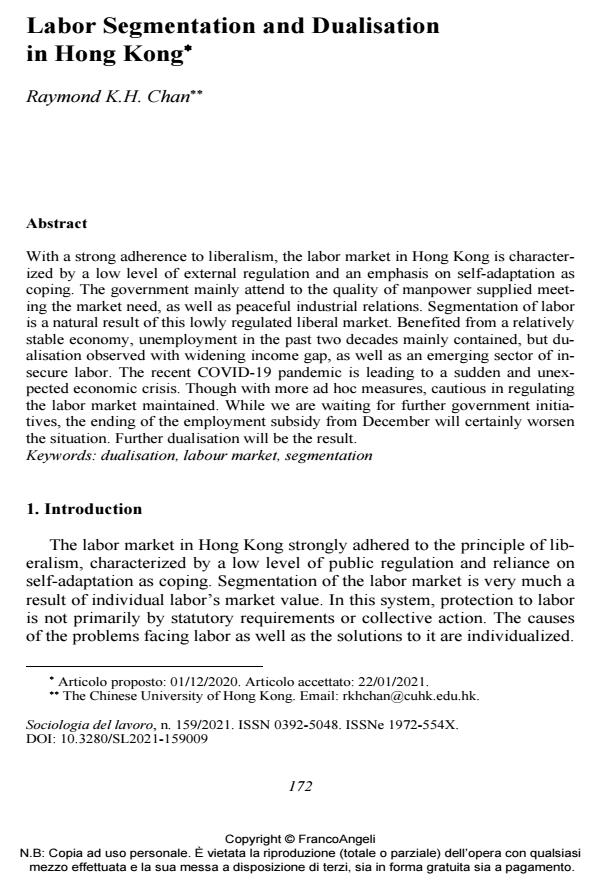Labor Segmentation and Dualisation in Hong Kong
Journal title SOCIOLOGIA DEL LAVORO
Author/s Raymond K.H. Chan
Publishing Year 2021 Issue 2021/159
Language English Pages 23 P. 172-194 File size 287 KB
DOI 10.3280/SL2021-159009
DOI is like a bar code for intellectual property: to have more infomation
click here
Below, you can see the article first page
If you want to buy this article in PDF format, you can do it, following the instructions to buy download credits

FrancoAngeli is member of Publishers International Linking Association, Inc (PILA), a not-for-profit association which run the CrossRef service enabling links to and from online scholarly content.
With a strong adherence to liberalism, the labor market in Hong Kong is character-ized by a low level of external regulation and an emphasis on self-adaptation as coping. The government mainly attend to the quality of manpower supplied meet-ing the market need, as well as peaceful industrial relations. Segmentation of labor is a natural result of this lowly regulated liberal market. Benefited from a relatively stable economy, unemployment in the past two decades mainly contained, but dualisation observed with widening income gap, as well as an emerging sector of insecure labor. The recent COVID-19 pandemic is leading to a sudden and unex-pected economic crisis. Though with more ad hoc measures, cautious in regulating the labor market maintained. While we are waiting for further government initia-tives, the ending of the employment subsidy from December will certainly worsen the situation. Further dualisation will be the result.
Keywords: Dualisation, labour market, segmentation
Raymond K.H. Chan, Labor Segmentation and Dualisation in Hong Kong in "SOCIOLOGIA DEL LAVORO " 159/2021, pp 172-194, DOI: 10.3280/SL2021-159009